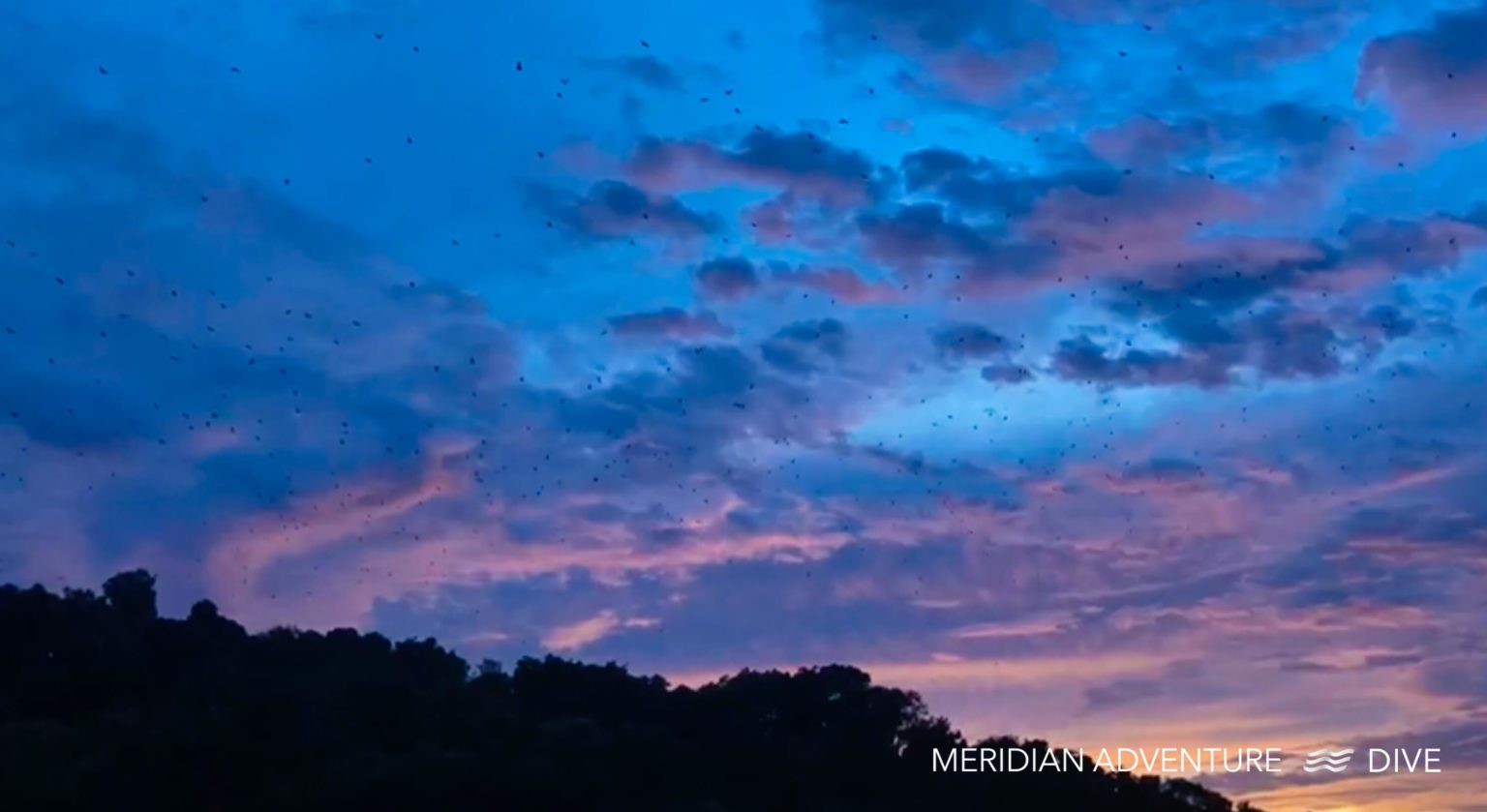The Island of Waigeo in Raja Ampat is home to Huge Fruit Bats
Nothing about the tropical treeline or white beach suggests that this island in the Raja Ampat region of Indonesia is home to anything different from the other breath-taking islands in the area; Mioskon island is a popular island for tourists and locals in the region. This tropical island is surrounded by incredible reefs known for their amazing dive and snorkeling points. At the same time, the white beach is a popular spot for divers to spend time between dives or day trips to lounge on the white beach and cool off in the crystal-clear waters.
While spending time on this island, you soon start to notice the jungle sounds in the background, and as you venture off from the beach into a small clearing, you begin to identify the different sounds. Birds chirping away in the branches, insects buzzing in the distance, and then you hear a soft whistle and screeches answered by another. These whistles change the tone, and soon you start to realise that you are eavesdropping on a conversation. As you take a closer look at the treetops, you notice the black hanging shapes swaying with the light breeze.
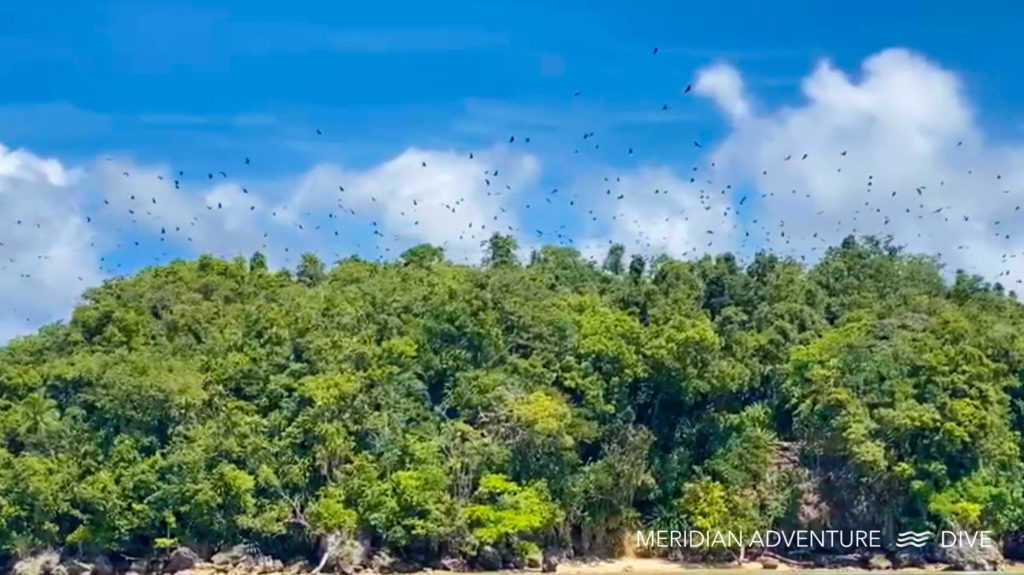
As the sun starts to set, the screeching and whistles become louder and more frequent, and the dark shapes begin to move. It is not long before you notice one or two spreading their wings before taking flight to start circling the treetops as if inviting the rest of the shapes to join. Before long, a swarm of dark shapes take flight from the treetops, their whistles filling the air while their silhouettes pass above in the picturesque sunset for which the area is known. You have just witnessed the start of the nightly migration of the Papuan Fruit Bat, also known as the Flying Fox.
This daily migration has become a popular tourist activity, and many dive boats can be seen around the island as sunset approaches to witness the thousands of bats leaving their daytime hide-out to head to the mainland for their nightly feast.
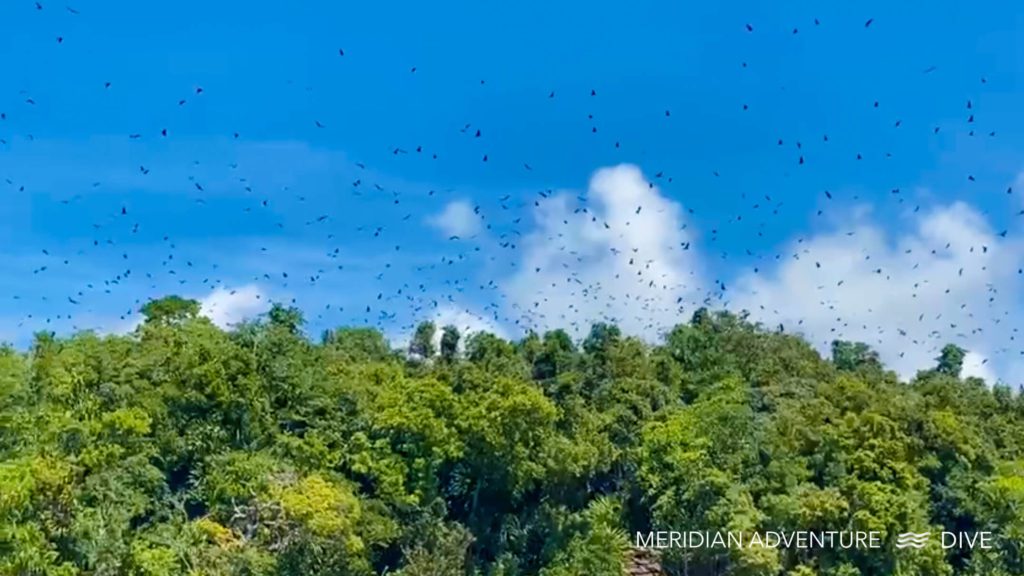
The famous diving area of Raja Ampat is home to many islands and large areas of the mainland that have yet to be explored. These lush tropical jungles are home to many birds of paradise, wild bush pigs, and many other species. The jungles are also home to an uncountable number of fruit trees, including banana, coconut, pawpaw, and the local Snake fruit and Rambutan. A feasting ground for the Papuan Fruit Bat.
The mass of bats that leave the island of Mioskon all converge on the nearby mainland of Waigeo and spend the night picking fruit out of trees. Their favourite seeming to be bananas, with one fruit bat easily consuming a large bunch in a single night. These bats will circle their intended target and swoop in repeatedly to take another bite of their chosen fruit, often repeating this for hours on end.
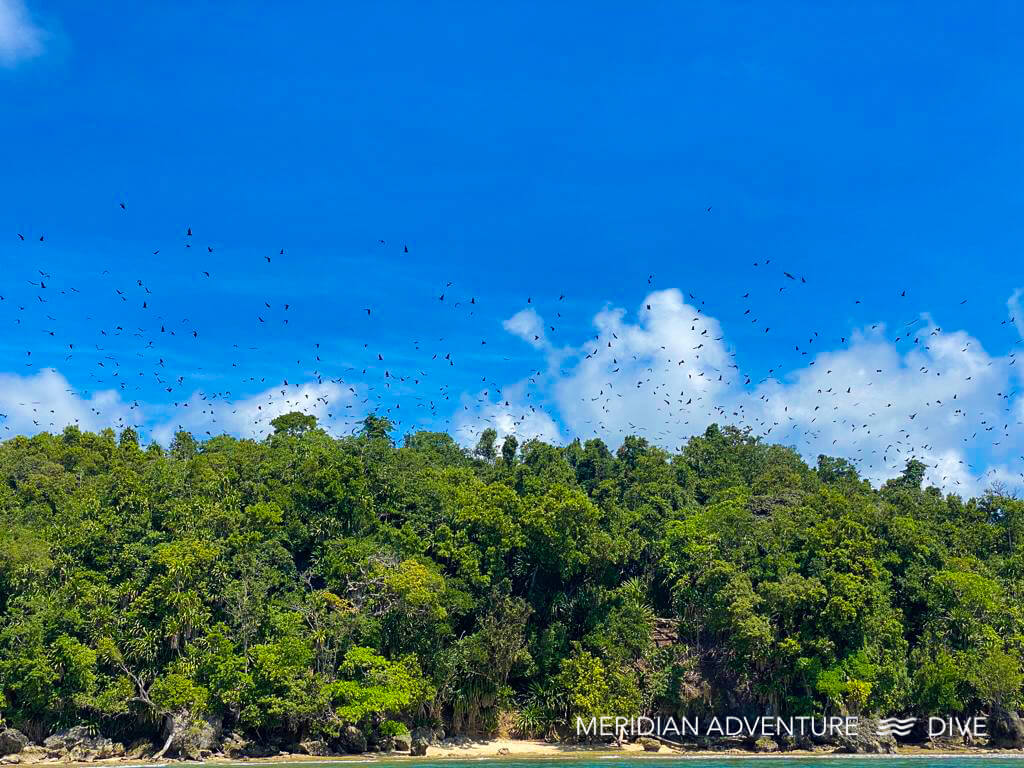
After their feast, these large bats will spend the rest of the night flying around the islands and often giving the unsuspecting a fright as they swoop in from the dark sky to investigate something interesting. Often this will be the fruit trees of a local resort or family.
Despite their large size and the many urban myths surrounding bats, they are completely harmless and help spread the seeds of the fruit they eat. These bats play a vital role in the ecosystem of the region.
Although Mioskon is known for the large population of fruit bats, there are many smaller groups of bats in the region. Many bat caves and smaller islands are hosts to these fruit bats and smaller species. Access to most of these caves is by boat during specific tides, making it a truly unique experience to swim through a small opening to gain access to an air-filled cave with sleeping bats on the cave ceiling.
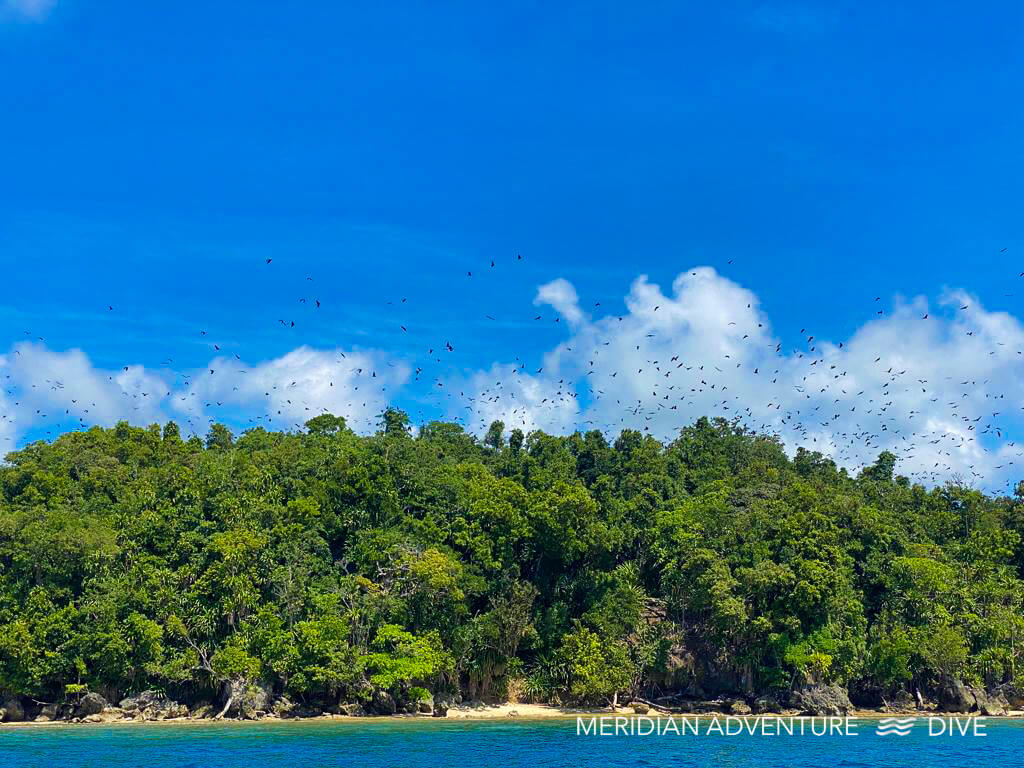
As much of the West Papuan region is uninhabited, it has become a popular area for bat and bird watchers to come and spot rare and endangered species in their natural habitats. Many local guides specialise in these sightings, and often these sightings are possible from the outdoor lounges of resorts in the area or the deck of a local homestay.
As the night ends, it is an awe-inspiring sight to witness the masses of bats returning from the mainland while the sun is rising to their perches on the magical island of Mioskon.
About Meridian Adventure Dive
Situated in Raja Ampat, Indonesia, Meridian Adventure Dive is a PADI 5 Star Resort and winner of the PADI Green Star award. Scuba divers enjoy our professional services that have become synonymous with both the PADI and Meridian Adventure names.
